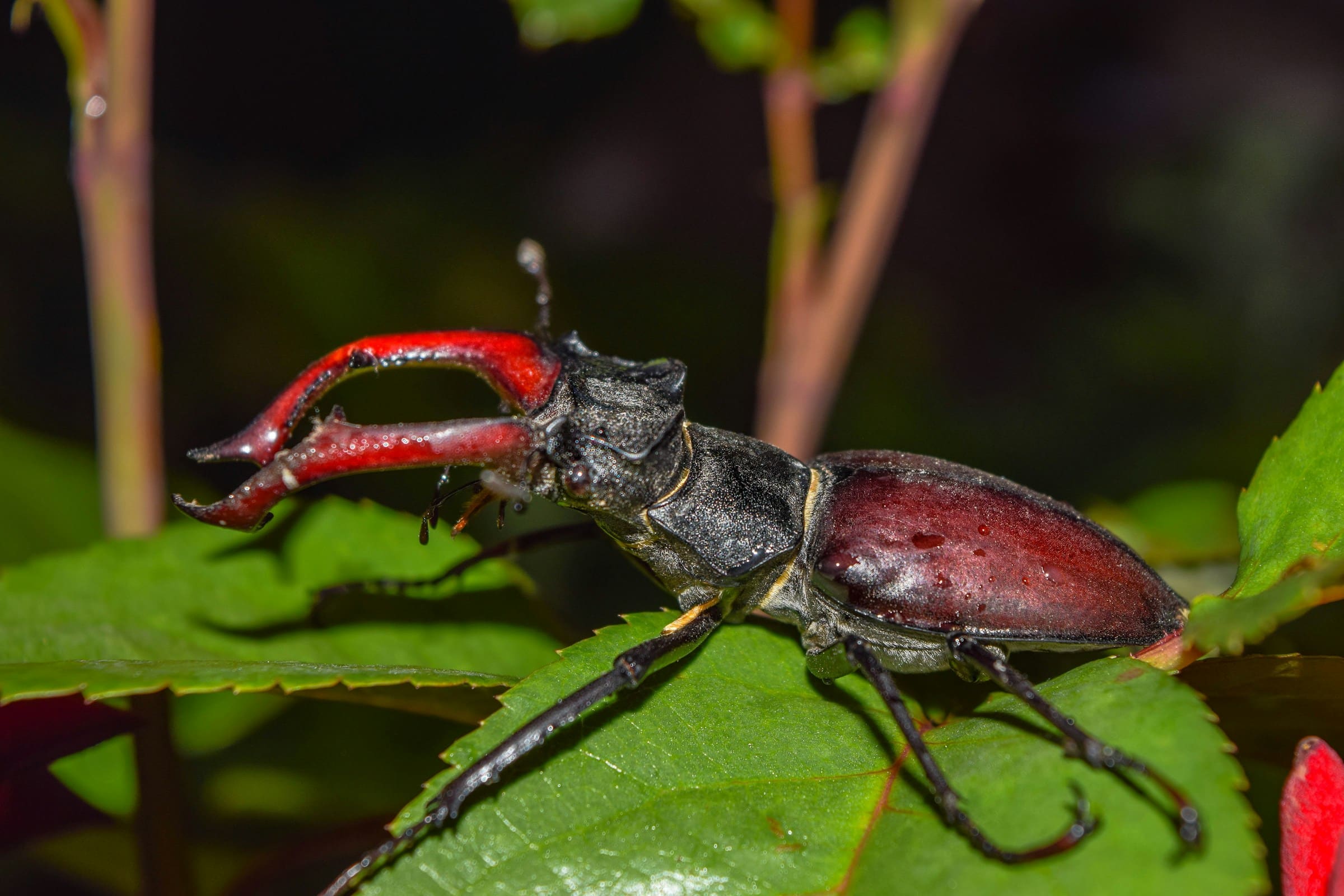What specific breeding habits of UK's rare insects should enthusiasts be aware of to aid in conservation efforts?

In the United Kingdom, there's an astonishing array of insect biodiversity. From the vibrant Rosel's Bush Cricket to the elusive Stag Beetle, these tiny creatures play a vital role in maintaining the balance of our ecosystems. Yet, they are often overlooked or misunderstood. In fact, some of the UK's rarest insects are facing the threat of extinction due to climate change, habitat destruction, and other anthropogenic factors. This is where enthusiasts can step in and play a pivotal role in conservation efforts. To do so effectively, it's crucial to understand these insects' specific breeding habits. This knowledge can help enthusiasts develop appropriate conservation strategies and contribute significantly to the preservation of these fascinating creatures.
Understanding Insect Breeding Habits
Before diving into the breeding habits of specific insects, it's important to understand what "breeding habits" mean in the context of insects. Breeding habits refer to the reproductive behaviors and processes of insects, including mating rituals, nest building, egg laying and care, and life cycle stages. These habits vary greatly among different insect species, and even within the same species. Therefore, understanding these variations can help to develop effective conservation strategies.
Sujet a lire : How are UK's heritage railways contributing to local wildlife conservation?
Insects' reproductive strategies are influenced by several factors, such as environmental conditions, availability of resources, and the presence of predators. For example, some insects lay their eggs in protected locations to prevent predation or weather damage, while others may have complex mating rituals to maximize the chances of successful reproduction. These behaviors are crucial for the survival and proliferation of insect species and therefore, must be taken into account in conservation efforts.
Breeding Habits of the Rosel's Bush Cricket
The Rosel’s Bush Cricket (Metrioptera roeselii) is a striking example of UK's rare and interesting insects. This elusive cricket is known for its long and slender body, and a striking contrast of green and brown colors. The breeding habits of the Rosel’s Bush Cricket are unique and worth understanding.
A découvrir également : How can UK's agricultural sector implement more owl-friendly practices to control rodent populations?
Males of this species produce a high-pitched song to attract females, a behavior known as stridulation. After mating, the female lays her eggs in the stems of tall grasses. These eggs remain dormant during winter and hatch in the following spring. Conservation efforts for this species should therefore focus on preserving tall grass habitats and minimizing noise pollution that might interfere with the males' mating calls.
Breeding Habits of the Stag Beetle
The Stag Beetle (Lucanus cervus) is another rare insect found in the UK. It is recognizable by its large size and the male's distinctive, antler-like mandibles. This beetle has a fascinating and complex breeding habit.
Stag Beetles spend the majority of their life cycle underground as larvae, feeding on decaying wood. After several years, they pupate and emerge as adults for a brief period of mating. Following mating, females lay their eggs in decaying wood or soil. Conservation strategies for this species should therefore focus on maintaining and enhancing habitats with plenty of decaying wood, such as old trees and log piles.
Breeding Habits of the Checkered Skipper
The Checkered Skipper (Pyrgus malvae) is a small and rare butterfly in the UK. It is characterized by its checkered patterning and rapid flight. The breeding habits of this species are closely linked to their habitat requirements.
Checkered Skippers prefer habitats with plenty of their larval food plants, such as Common Mouse-ear and Creeping Cinquefoil. After mating, females lay eggs on the underside of these plants. The caterpillars feed on these plants after hatching. Therefore, conservation efforts for this species should focus on preserving and restoring habitats rich in these plant species.
Breeding Habits of the Tansy Beetle
The Tansy Beetle (Chrysolina graminis) is a vibrant, metallic green beetle that is now only found along a 30km stretch of the River Ouse around York, in the UK. This beetle has a very specific breeding habit.
The Tansy Beetle feeds exclusively on the Tansy plant (Tanacetum vulgare), and females lay their eggs on the underside of Tansy leaves. The larvae, upon hatching, also feed on this plant. Therefore, the conservation of this species is strongly tied to the preservation of the Tansy plant. Efforts should be aimed at protecting and increasing the availability of Tansy plants in the beetle's restricted habitat.
Understanding the intricate breeding habits of these and other rare insects is crucial to their conservation. By focusing on the specifics of their reproductive requirements, insect enthusiasts and conservationists can tailor their efforts to be more effective, ensuring the survival of these fascinating creatures for generations to come.
Breeding Habits of the Ladybird Spider
The Ladybird Spider (Eresus sandaliatus), once thought to be extinct in the UK, is now known to inhabit a few heathland sites in Dorset. This spider, named due to the bright red body and black spots of the male, has unique breeding habits that should be considered for conservation purposes.
In the early spring, males emerge from their burrows in search of females, who remain hidden in deep silk-lined burrows. After a brief, cautious courtship, mating occurs in the female's burrow. Post-mating, the female produces one egg sac, containing hundreds of eggs, which she guards fiercely until they hatch. The spiderlings stay with their mother until they undergo their first moult, after which they disperse.
Conservation efforts for the Ladybird Spider should focus on preserving heathland habitats and ensuring that there is sufficient ground cover for the females to build their burrows. Moreover, reducing disturbances that might force the females to abandon their egg sacs is also crucial.
Breeding Habits of the Hornet Robberfly
The Hornet Robberfly (Asilus crabroniformis) is a striking and rare insect found in the UK. It is the country's largest fly and is known for its fearsome appearance and predatory habits. The breeding habits of this insect are particularly interesting.
Females lay their eggs in cow dung, which provides a rich source of nutrients for the larvae. The larvae are predators too, feeding on dung beetle larvae within the dung. Once they have completed their development, the larvae pupate in the soil and emerge as adults the following summer.
Conservation strategies for the Hornet Robberfly should focus on maintaining habitats that have a steady supply of dung for the larvae, such as grazing pastures. Additionally, efforts should be made to reduce the use of insecticides, which could inadvertently harm these beneficial predatory flies.
Conclusion
The breeding habits of the UK's rare insects are as diverse and fascinating as the insects themselves. Understanding these habits is key to ensuring their survival. As enthusiasts, it is our responsibility to acquire this knowledge and employ it in our conservation efforts.
From the loud stridulation of the Rosel's Bush Cricket to the hidden burrows of the Ladybird Spider, every aspect of these insects' reproductive behaviors has implications for their survival. Ensuring the availability of tall grasses, decaying wood, specific food plants, and even cow dung, can make a significant difference to these species.
Through these devoted efforts, we can hope to see the preservation of these remarkable insects and the biodiversity they contribute to. Indeed, by helping to conserve these insects, we are also safeguarding the health of our ecosystems and our planet.
